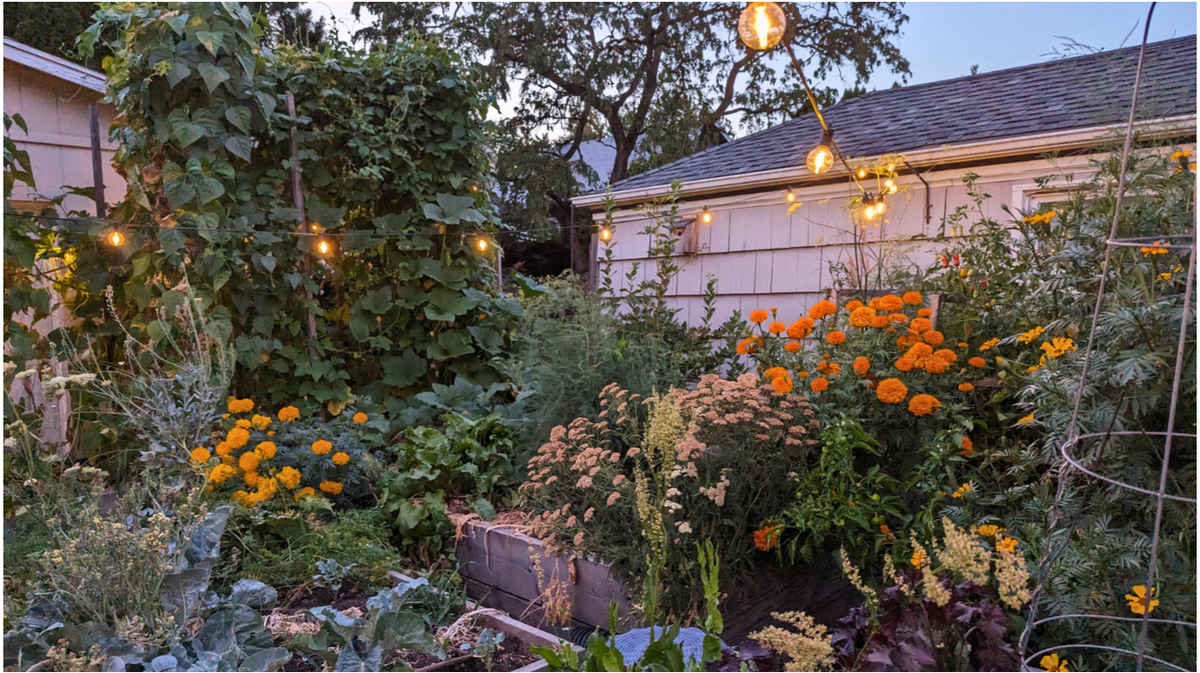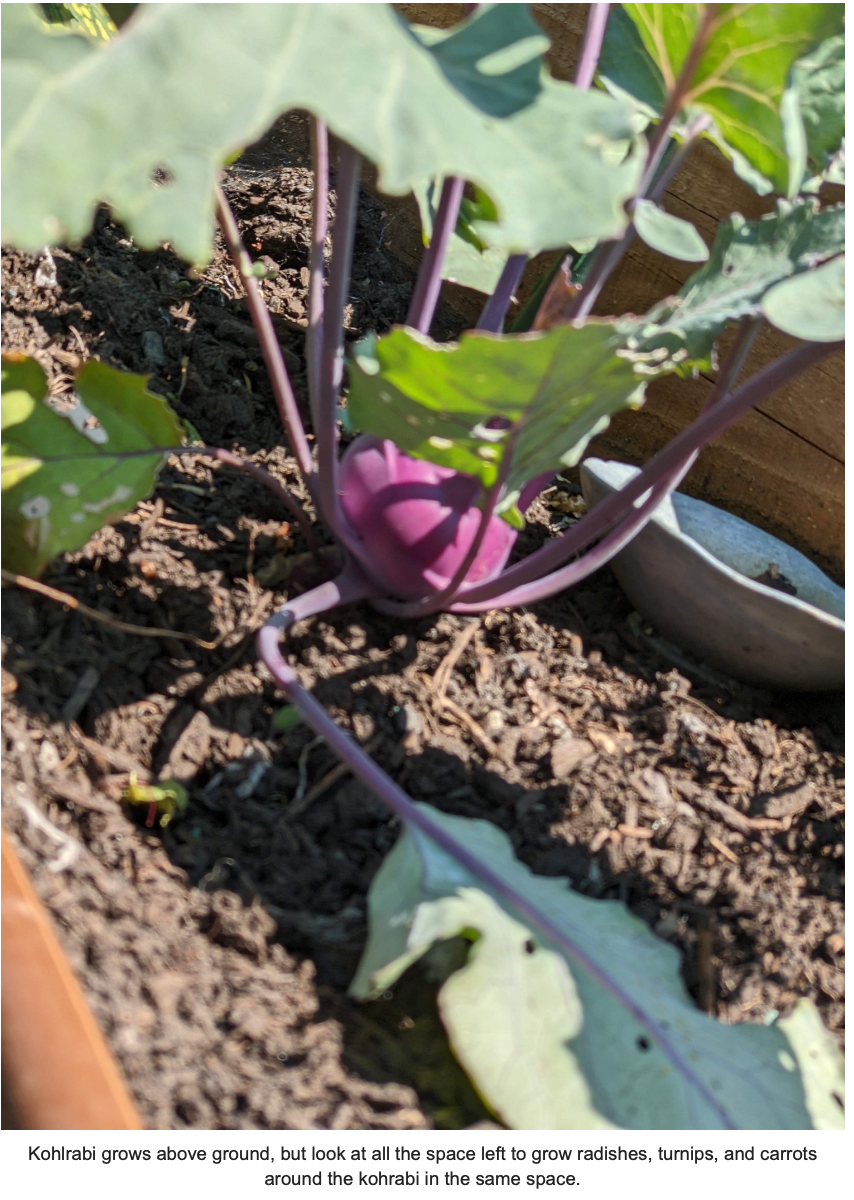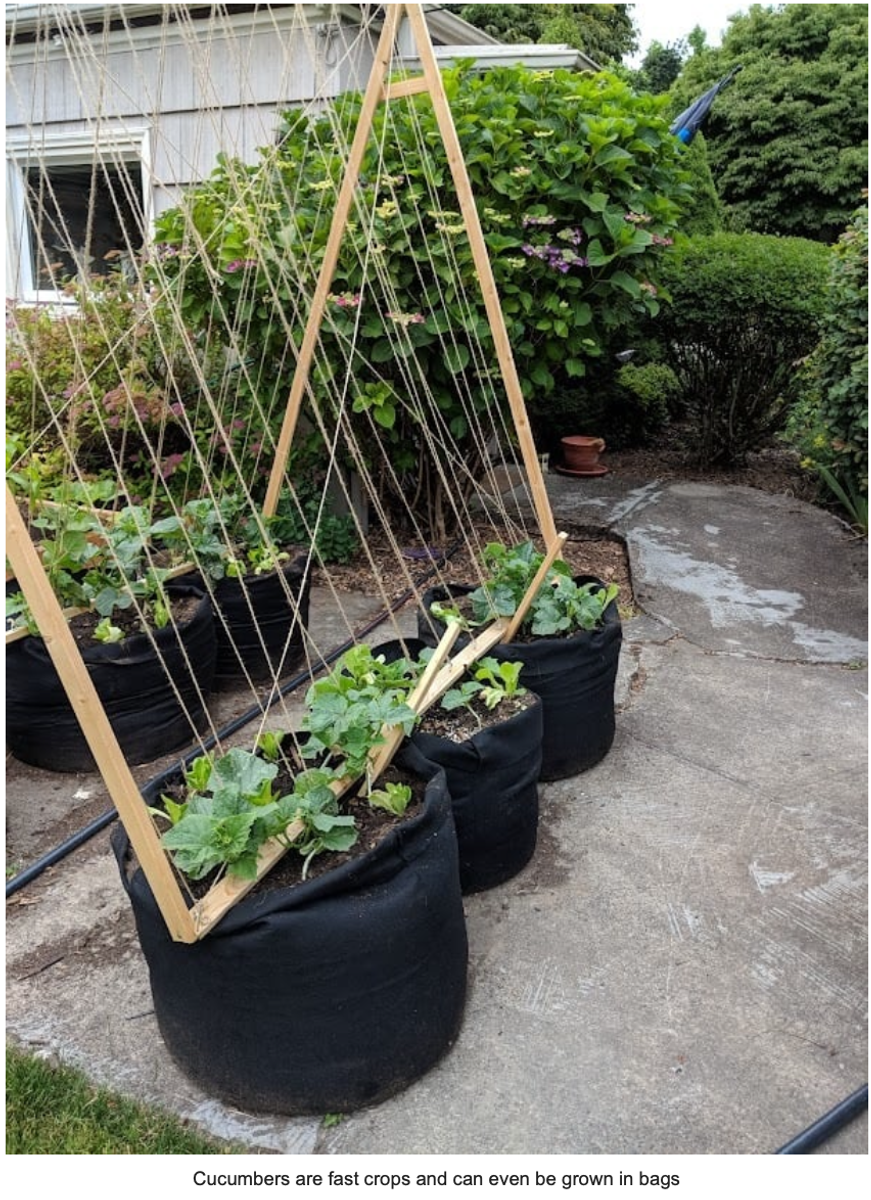The Green Page:

Seven Strategies for Making the Most Out of Your Small Garden:
Amanda Blum
If you're growing this year to save on groceries, it's important to use your space well.
As grocery prices continue to rise, many people may be considering growing a vegetable garden for the first time. It can be a great idea, not just because groceries are
expensive, but because getting to the store includes soft costs like gas, grocery bags,
and time—to say nothing of how wildly empowering it can be to walk into your backyard and collect the food you grew yourself.
The key to your success here is maximising the space you have, because gardening has
soft costs, too. The fertiliser, water, and, of course, your time. You’ve got a limited amount
of space to work with, as well, so choosing the right crops to get the maximum amount of
food is essential.
Maximise the space by growing up and down.
You might look at a raised bed and see a simple 2m by 2m space, but I see all the
vertical space. Beneath the tomatoes lies space for radishes, turnips, and carrots. Peas, beans, and cucumbers grow straight up if supported by a trellis, using almost no space of the bed itself. If tomatoes are allowed to sprawl across the bed, they occupy a considerable amount of space. However, when pruned and trellised appropriately, they’ll grow upward, leaving room for crops around them. Almost all squash can be trellised to grow upwards.
"Cut and come again" crops make the most of available space.
Grow lettuce, celery, chard, and kale because these crops allow you to take leaves or stalks from them without killing the plant—they'll simply grow back. Eventually, the plant will go to seed (it will send up a shoot that will flower, and then that flower will produce seeds, and this process will turn the vegetable bitter). These crops mature quickly, allowing them to be easily replaced.
Avoid crops that take up a lot of space for little return
I only grow cabbage in the wintertime—during the summer, I can’t spare the space. Each
cabbage plant needs 1 square metre or more, and only produces one head of cabbage,
which is cheap to buy at the market. The same is true for broccoli and cauliflower. A
single zucchini plant will take over an entire bed, and while it will produce an endless
amount of zucchini, it’s usually too much hassle. Corn doesn’t seem like it would require
much space, but you need to grow it in blocks of 1.2 m by 1.2 m for it to pollinate.
Corn is also such a heavy nitrogen feeder that it will rob all your nearby vegetables of the
nitrogen they need to grow.
Grow mini vegetables instead of full-size ones.
Grow mini bell peppers instead of full-size, since each full-size plant may produce only a few bell peppers, but a mini pepper plant may produce 50.
The same is true of eggplants and tomatoes. Planting one cherry or plum tomato plant (I
recommend Juliet) will give you a summer's worth of tomatoes to play with rather than
waiting for a few full-size tomatoes to ripen. Small eggplants will also ripen over the
season, giving you produce to harvest more often.
Choose crops that are easy to grow.
Some crops are more finicky than others. It’s hard to screw up lettuce, radishes, or peas,
but a lot of things can go wrong before you successfully grow a watermelon or artichoke.
Carrots are notoriously tricky to germinate, but beets are relatively easy to grow for everyone.
Choose vegetables that grow quickly.
Some vegetables are short crops, meaning they mature quickly, while others are long crops, taking five to six months to mature. Brussels sprouts and parsnips, for instance, take six months to grow, but turnips can be harvested in 60 days. Lettuce, radishes, beets, scallions, spinach, chard, cucumber, green beans, and peas are all examples of short crops.
The back of any seed packet (or the plant label) will tell you how long any crop will take to harvest.
Stagger your planting
Gardens are not a “set it and forget it” project. You need to be constantly inputting (planting) and outputting (harvesting). To keep a small space consistently going, you’ll want to utilise succession planting. Instead of planting peas once, plant them every two weeks so there's always something to harvest. The same is true for almost every crop mentioned above, including lettuce, scallions, radishes, beets, and turnips. Plant some in week one, and then again in week three, five, and seven. As you pull out older plants, newer plants are already growing. If a plant is struggling, pull it out and try something else—you don’t have the space to let anything linger.



